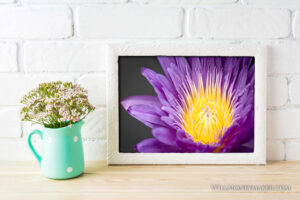We spend a lot of time focusing on the single image but truthfully, for a lot of us at least, and photography projects are probably a bigger deal than the singular image. That’s because I think it’s easier for many of us to explore a theme as much as we can, and that leads to the development of a project, intentional or not. Often, those single “display” pieces come from projects that we’ve created.
So if projects are the focus, then what is their source? To my mind, there are to major ways to get started on a project. Probably more than two, but these are the big ones.
The first way is perhaps the more conventional way to start a project. This is where we sit down and brainstorm. It often starts with ideas that we’ve written down, or maybe that initial brainstorming session is meant to generate a list of potential project ideas.
Once that initial idea is in hand, then it’s time for more brainstorming. We ask ourselves a lot of questions. Is there a story to tell here? What kinds of photographs should be included? We analyze the project to see if we can come up with a beginning, middle and end. Ultimately, we put all of this thought into it because we want to create something not only enjoyable, but cohesive—understandable as a whole.
There is another way to go about designing a project, however. And this method sounds a lot simpler, at least on the surface, because instead of all that brainstorming, you have only one thing to do: Just let the project happen.
This may actually be the better way to go about creating a project, too. Why? Because sometimes all of that brainstorming and structuring leads to something that is less organic and more forced. Sitting down beforehand to create a framework leaves you less leeway to simply let life happen and let inspiration take you wherever it will. Some of the most inspired projects use life as the source. In so doing, the project becomes more freeform, natural and flowing.
But how do you use life as the source of a project? It’s easy—at least on the surface, if not necessarily in practice. The first step is to go out and experience life and collect photographs while you’re doing this. Gather up as many images as you like, and let them rest. Go back to look at those images periodically and remember the day that you took them. Sooner or later, at least one of these images—and probably lots of them—will give you some ideas. You may even discover among all of this gathering that you’ve already gathered a group of things that can be the basis for a project. However, it pans out, once those ideas start flowing from what you’ve already created, you can continue to build upon them. I don’t necessarily think brainstorming projects is a bad idea. In fact, sometimes, it’s the only way to approach a project. But just letting projects happen can often be the better way to go about it because this method allows you to create something more meaningful and personalized to you. Why? Because you didn’t force yourself to adhere to a pre-planned project or to collect things that fit a theme you’d previously devised. Rather, you went out into the world, experienced it with your own unique perspective, and let those experiences guide you to their natural conclusion.




